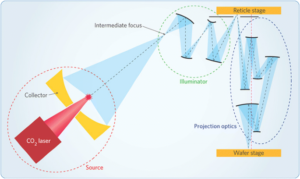It’s tough to define exactly what’s holding a busy business back since there are so many things going on. A requirements assessment is important because it allows an organisation to discover the gaps that are preventing it from reaching its goals. Anthony J. is a well-known author. Jannetti writes in A Guide to Performing a Needs Assessment and a Gap Analysis that these gaps might exist in knowledge, practices, or abilities.
Knowing what is functioning well and what needs to be altered is critical to achieving those goals and building a successful firm. It might be a stolen smartphone, a hacked supplier accounts, or a link in an email. Even as organisations become more aware of the need of protecting their information and technology, attackers continue to discover new ways. So for that reason, Security Needs Assessment. Many firms might be susceptible to attack even after implementing advanced security systems, which is why you need frequent safety reviews to strengthen your cyber security and lower the risk of assaults. While it might be easy to put together a customer service training programme fast, it is far more prudent to first establish whether it is truly necessary.
An evaluation can assist you in making this decision. Your evaluation and research will float easily into the next stage becoming the solution if you spend time, ask smart queries, and continue the interrogating line to the true reason (root cause analysis). The following are at least some of the reasons for doing a needs assessment.
Because of a recent occurrence, supervisors and managers may contact trainers and request that they give training. Your hospital cafeteria, for example, is receiving an unusually high number of consumer complaints. As a result, the trainer can be required to create a customer service skills training programme. Although it may be tempting to put together a customer service training programme fast, it is far more prudent to first establish whether it is truly necessary. An evaluation can assist you in making this decision. Your evaluation and analysis will glide easily into the next stage and become the design if you invest time, ask smart questions, and follow the questioning line to the true reason (root cause analysis). The following are at least some of the reasons for doing needs assessment:
- Determine whether or not there is a requirement for training.
- Ascertain that the training will be relevant to the organization’s needs.
- Identify the underlying causes of low performance.
- Determine the target level of performance (training results).
- Provide a baseline of information.
- Determine what you want to measure and how you want to measure it.
- Determine the substance and scope of the training, as well as examples of what works.
- Provide material for role plays, briefcase studies, and examples based on some of the war stories you’ve heard.
- Obtain support from both participants and the organisation. (People are more likely to jump on board if they are involved from the beginning.)
Steps
Let’s have a look at the general processes involved in a requirements analysis.
Exploration and identification: The initial part of the needs assessment is determining what you already know about your organization’s requirements, whether they be for more resources, new technology, or market growth. It’s all about determining where you are now and where you want to go in the future. You must also uncover any hidden requirements that are preventing you from progressing from where you are to where you want to be. You’ll probably rank these requirements in order of priority. The scope of your research will subsequently be determined. In other words, the requirements on which you will concentrate are your efforts.
Data collection and analysis: At this stage, you’re gathering data to better understand the gaps (needs) between where you are now and where you want to go. Data can be gathered internally or externally, using market research techniques including surveys and secondary data analysis, such as statistical data collected by the federal government. Data is collected, organised, and evaluated after that.
Utilization: This is where the information you gathered is put to use to formulate and carry out a plan of action. Set priorities, analyse options, do a cost-benefit analysis to determine which solution is best based on relative costs and benefits, develop a strategy to implement your solution, and then assign the resources required for execution. The purpose is to come up with a strategy to bridge the gap between the organization’s planned future state and its existing condition.
Evaluation: Smart organisations review the outcomes of their needs assessments, but many businesses do not. You’ll compare the action plan’s outcomes to the outcomes: has the action plan gotten you closer to where you want to be? Evaluation can assist you in determining what factors contributed to the success of an action plan or identifying flaws in the assessment of your requirements. Did you, for example, overlook a critical gap or were the resources you provided insufficient to fill it?
Conclusion
In the end, an evaluation aids you in determining the problem, confirming the problem, and seeking remedies.





More Stories
Choosing Between Android and iOS for App Development
What Features Should I Look for in a Noise Smart Watch?
C# and the NET Framework: What’s the difference